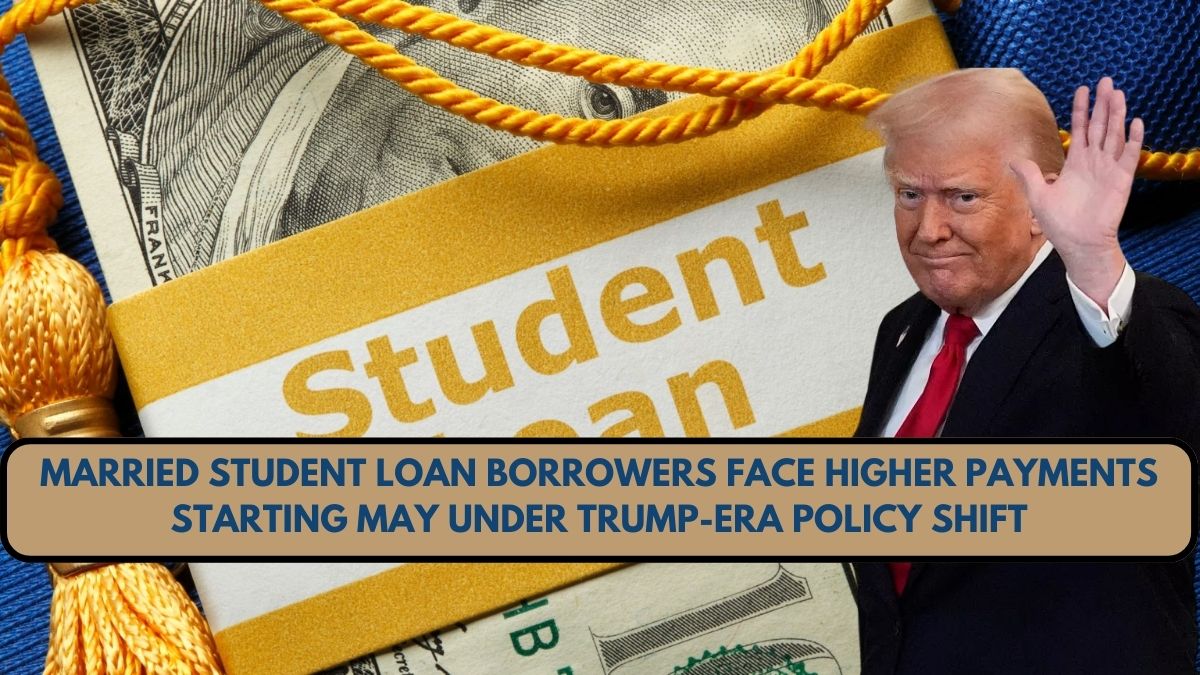Thousands of married student loan borrowers may face higher monthly payments starting May 2025 after a court decision blocked the Biden administration’s Saving on a Valuable Education (SAVE) plan. In its place, the Education Department has reverted to older income-driven repayment (IDR) models—now including a controversial rule change introduced under former President Donald Trump.
What Changed?
On March 27, 2025, a federal court ruling halted the SAVE plan, which was designed to cap monthly payments and shorten timelines for loan forgiveness.
The SAVE plan allowed borrowers—especially those married and filing taxes separately—to exclude their spouse’s income from repayment calculations. This provision helped reduce financial burdens on dual-income households.
However, in response to the court’s injunction, the U.S. Department of Education reinstated access to existing IDR plans such as PAYE (Pay As You Earn) and ICR (Income-Contingent Repayment). But a significant modification now applies: spousal income will be factored into the borrower’s monthly payment calculations, regardless of whether taxes are filed jointly or separately.
“This change is mandated by the court’s ruling,” said James Bergeron, Acting Undersecretary of Education.

Impact on Borrowers
This means borrowers who once benefited from excluding their spouse’s earnings must now expect higher bills. The income calculation model could increase monthly payments by hundreds of dollars in some cases.
The Department of Education has not confirmed whether this policy shift is temporary or permanent. Borrowers are being urged to recalculate their potential payments using the Federal Student Aid Loan Simulator available here.
Application Delays and Temporary Website Issues
Following the court’s SAVE block, the Department temporarily disabled online IDR applications to make system adjustments. Many borrowers are currently stuck in a backlog, waiting to switch plans or have their existing terms recalculated.
While IDR plans like PAYE and ICR are still available, the official student aid portal has not yet provided a timeline for when all services will be fully restored.
Trump’s Broader Push Toward Privatization
This development comes amid a broader Trump-era push to privatize the federal student loan system. In early 2025, Trump signed an executive order to dismantle the Department of Education, citing inefficiency in managing the $1.6 trillion student debt portfolio.
Trump proposed transferring oversight to the Small Business Administration (SBA), which could then oversee student lending via private banks—a model reminiscent of the pre-2010 Federal Family Education Loan (FFEL) program.
Read more on the SBA and how it operates at sba.gov
Risks of Privatization
Critics warn that privatizing student loans could:
- Eliminate protections such as loan forgiveness and income-based repayment
- Prioritize borrowers attending high-return institutions
- Restrict access for students in less lucrative fields
“Private lenders are driven by financial outcomes, not educational opportunity,” noted student loan expert Mark Kantrowitz.
On the other hand, supporters—like the American Enterprise Institute—claim privatization could save taxpayers billions of dollars. However, implementing such a policy would require Congressional approval and massive administrative restructuring.
What Borrowers Should Do Now
With potential changes looming, married borrowers should:
- Use the Loan Simulator to recalculate payments with spousal income included
- Explore PAYE, IBR, or ICR plans if SAVE is no longer available
- Consider consolidating loans to become eligible for certain repayment plans
- Keep up with updates at studentaid.gov
If you are eligible for Public Service Loan Forgiveness (PSLF), continue making qualifying payments under any available IDR plan. Learn more at Federal Student Aid – PSLF.

Final Thoughts
May could mark the beginning of higher financial strain for many married student loan borrowers. Whether this is a temporary setback or a sign of long-term policy shifts remains to be seen. For now, staying informed and proactive is essential.
This article has been carefully fact-checked by our editorial team to ensure accuracy and eliminate any misleading information. We are committed to maintaining the highest standards of integrity in our content.

Filza specializes in simplifying financial topics for everyday readers. Whether breaking down Canada’s tax guides or U.S. benefits like SNAP and VA Disability, Filza’s relatable writing style ensures readers feel confident and informed. Follow her insights on LinkedIn or reach out via email at [email protected].




